The Hidden Cost of Print Coverage: How AI and New Technologies Are Driving Toner Consumption
- Daniel Moreno
- Oct 2
- 4 min read

Why Monitoring Efficiency and Toner Consumption Projections Is Essential
In the printer and multifunction rental business, profit margins depend on a delicate balance: the fixed revenue from the contract versus the variable operating costs. Among these costs, the most decisive—and often underestimated—is the actual cost per page, determined not only by the price of the cartridge but also by the print coverage generated by customers’ documents.
ISO/IEC 19752
The ISO/IEC 19752 standard establishes that a toner cartridge is measured under laboratory conditions with 5% coverage per page. However, in real life customers rarely print at that density. Documents with logos, graphics, gray backgrounds, or simply denser text blocks raise coverage to 10%, 15%, or even 20%.
What’s surprising is that even a 1% increase in coverage can have a disproportionate impact: doubling coverage from 5% to 10% practically cuts cartridge yield in half. And not all devices react the same way: some maintain a linear relationship between coverage and consumption, while others are more sensitive, showing sharp drops in yield with small variations in content.
Did You Know?That “5% coverage” is roughly equivalent to a short paragraph of text on a letter-size or A4 page. In other words, if a customer prints invoices with logos, multi-page contracts, or documents with tables and graphics, consumption can easily double or triple that figure.

5% Coverage

10% Coverage

Factors Affecting Coverage
To understand why cost-per-page calculations differ between clients and contracts, it is important to identify the factors that most influence print coverage:
Type of document or image: Simple text consumes less, while graphics, photos, or solid blocks increase coverage.
File size and resolution (DPI): A document at 600 or 1200 DPI produces higher dot density than one at 300 DPI.
Environmental conditions: Humidity, temperature, and dust can cause toner to deposit unevenly, increasing consumption.
Use of solid or spot colors: In color printers, but also in monochrome with gray backgrounds or logos, coverage spikes.
Copy printing: Scanning and copying from glass or ADF introduces “noise” (shadows, edges, smudges) that increases coverage.
Reprinting previously printed documents or faxes: Reproducing printed documents adds visual artifacts that increase consumption.
Paper type and weight: Porous or heavier paper requires more toner for a uniform print.
Printer driver settings: High-quality or higher-density modes increase coverage; draft or eco modes reduce it.
Printer engine design and sensitivity: Some devices are more aggressive in toner dispensing, making them less efficient at higher coverage levels.
New Technologies and Trends Impacting Coverage
Beyond traditional factors, behavioral changes and new technologies—including artificial intelligence—are transforming how documents are created, and therefore, print coverage:
Increased use of graphics and visual elements in reports, contracts, and internal materials, driven by accessible design tools like Canva or enhanced Office templates.
Digitally enriched documents with visible signatures, validation stamps, QR codes, and barcodes that expand inked areas.
A trend toward color printing even for internal documents to create visual impact, even if it increases cost.
Reprinting scanned documents, which often include visual “noise” like edges or shadows that raise density.
Compliance requirements in sectors like healthcare, banking, or government, which mandate letterheads, logos, or visible stamps on every page.
Growth of remote work: many users print from home using default settings (high quality, color), rarely optimizing consumption.
Adoption of AI in content creation: automatically generated reports, presentations, and documents often include graphics, diagrams, and visualizations, multiplying average coverage.
BYOD and mobility: users printing from mobile devices and apps without quality control or optimized formats.
Together, these trends mean that documents which were once primarily text are now printed with much higher coverage, directly impacting the profitability of print contracts.
Why Monitoring Is Vital
Not measuring customers’ actual coverage is like sailing blind:
Cost per page is underestimated, eroding profitability.
Heavy consumable users go undetected.
Realistic expense projections and contract adjustments become difficult.
Coverage monitoring answers key questions:
Which clients exceed the 5% threshold, and how does that affect real cost?
Which devices show greater sensitivity and should be reserved for less demanding environments?
How does cost per page vary by paper size (A4, legal, tabloid), where toner consumption changes with printed area?
Recommendations for the Channel
Constantly measure average coverage for each client.
Project cost scenarios: calculate coverage variations (5%, 10%, 20%) to estimate impact.
Segment by devices: identify which models are more sensitive and avoid placing them in high-coverage accounts.
Include paper size in cost-per-page calculations, since a legal sheet is not equivalent to A4 in effective coverage.
Educate clients about the relationship between document type and printing cost.
Role of Monitoring Tools in Coverage Management
In this context, relying solely on theoretical coverage estimates is no longer enough. Tools like Princity, our print management and monitoring platform, allow organizations to measure real-time coverage for each device, user, and document. This enables organizations to:
Instantly identify increases in toner or ink consumption.
Detect areas or departments generating disproportionate costs.
Adjust maintenance contracts or per-page billing based on objective data.
Anticipate consumable replenishment with predictive analytics, avoiding downtime and overcosts.
This level of visibility not only strengthens profitability for the channel and cost forecasting for clients, but also enables smarter, more transparent decision-making in document management.
Environmental Perspective
It is also important to recognize that increased coverage affects not only financial costs but also environmental impact. Higher toner or ink consumption means more plastic, more waste, and a larger carbon footprint.Using tools like Princity also supports organizational sustainability goals by promoting responsible printing policies, reducing waste, and optimizing consumable use.
Conclusion
Cost per page is not a fixed figure, nor is it determined solely by consumable price. Actual coverage, device sensitivity, and now new document creation technologies (AI, enriched digital content, and increased use of graphics) are the variables that most affect the profitability of print rental contracts.






Comments